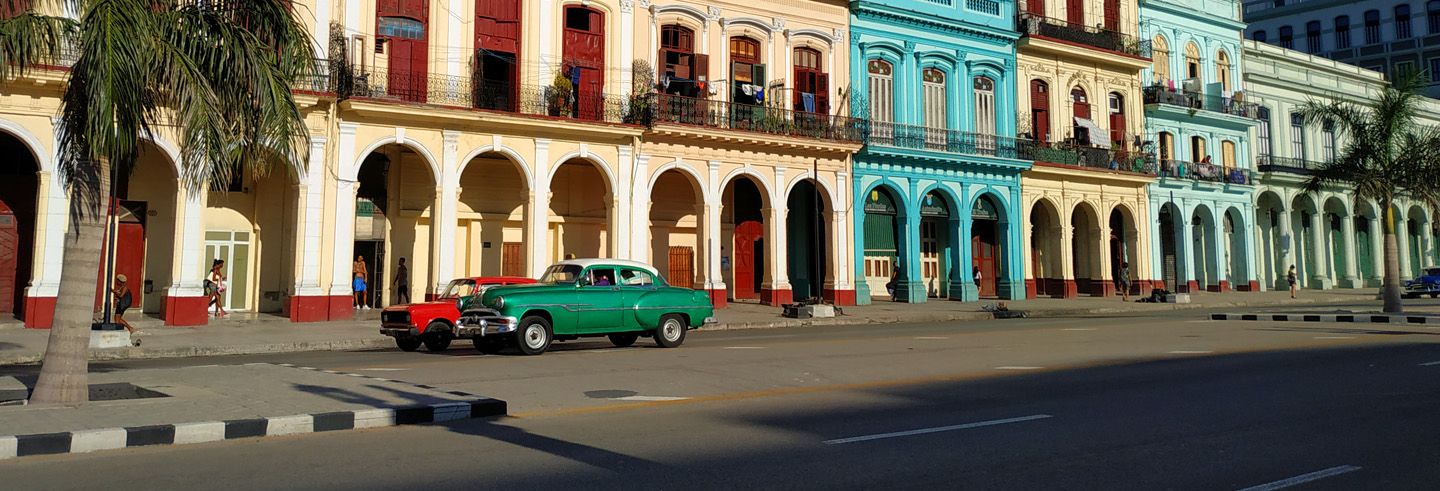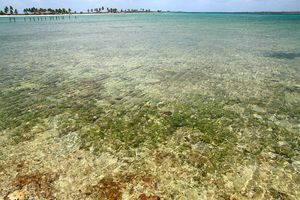

Diving in Cuba
If you are passionate about diving, do not hesitate to practice it in the wonderful marine depths offer by Cuba.
The Caribbean island of Cuba has hundreds of kilometres of virgin beaches, little islands and unexplored territories under the water with a great fauna and flora diversity. Its complete plans of sighting the ecosystem are a worldwide reference and turn it in an idyllic destination for the enjoyment of professional divers and beginners equally, because its waters are truly marine paradises with coral reefs, walls, and different fauna and flora species.
The isolated María la Gorda, in the West end of the Pinar del Río, is famous by its imposing black reef walls, full of marine life. Explore the largest reef in Cuba and the second largest in the world in front of the Playa Santa Lucía Beach, in Camagüey, or swim beside the yellowtail, and angel-queen fishes in front of the coasts of Jardines del Rey. The shipwreck lovers can explore the Spanish warships facing the coasts of Santiago de Cuba in the South; sink to inspect the Neptune in the coasts of Varadero; or dive with imposing bull sharks in Santa Lucía, in the North of the island.
The waters surrounding the main island, and the more than 4,000 cays and islets which make up the Cuban archipelago, are warm and extraordinarily crystalline, with an average visibility of 30 to 40 metres and a temperature between 24º and 29º, then you can perfectly dive with lycras or wetsuits of 3mm. These dive conditions are consistent through the year, with the exception of the hurricane season between June and November, which might cancel some diving days for the tourists.
You can find the diving jewels in the central section of the Southern coast, between Playa Girón Beach and Manzanillo, where there are the best locations: Juventud Island and Reian Gardens.
Cuba has more than 100 diving points distributed along the whole insular platform where you can practice different modalities: snorkeling, sports diving, night, deep, in a cenote or cave. There more than 30 international diving centres, all of them completely equipped and assisted with specialized medical service, among which stand out the María la Gorda International Diving Centre, in Pinar del Río, and Barracuda, in the spa of Varadero.
Main areas and international centres for diving:
Maria la Gorda Cay
Juventud Island: El Colony, Large Cay of the South
Playa Girón Beach: Caleta Buena Small Cove
Cienfuegos: Faro Luna Lighthouse
Trinidad: Marina Cayo Blanco, Marina Puertosol, Assesino del Mar
Rey Gardens (Cayo Coco and Cayo Guillermo): Green Moray, Coco and Blue Diving
Santiago de Cuba: Bucanero, Sierra Mar, Sigua
Guardalavaca: Cuba-Divers, Sea Lovers Diving Center
Playa Santa Lucia Beach: Shark’s Friends
Reina Gardens’ Archipelago.: Avalon
Varadero: Aqua, Barracuda, Gaviota.sa, VaraDiving
Havana: Blue Ree, La Aguja
Levisa Cay
Conditions for diving:
All diving centers count with:
Prepared instructors in subaquatic rescue, first aids and oxygenation.
Civil Responsibility Insurance.
First aids and oxygenation facilities.
Radiotelephone communication.
Effective emergency procedure for evacuation in case of accident.
Health Care:
Cuba counts with a system of national health care, with evacuations and specialized treatment in subaquatic medicine and with a national network of hyperbaric chambers with capacity for more than one person, hospital and extrahospital in Havana, Matanzas, Juventud Island and Santiago de Cuba.
The divers’ assistance is designed for any circumstance and extends to the whole Cuban territory. It works 24 hours during the whole year and is complemented with other medical discipline, therapies, hospital admissions rooms, and Doppler’s ultrasonography for related to the pressure diagnostics, among other resources.
Among those resources it includes Aeromedical transportation (AMT) or Emergency Medical Services Total System (SIUM), Multispot Chambers (Hyperbaric Oxygen, B.I.B.S. System).
Jardines de la Reina
90 km. far from the Southern coast of the main island and along 75 miles, it is located the Jardines de la Reina Archipelago, formed by more than 240 virgin islands with reefs and mangroves, bathed by the turquoise waters where marine life reaches all its splendor. The archipelago was declared Marine Park in 1996, with the support and the management of Avalon, the Ciego de Ávila Coastal Ecosystems Research Centre and the Cuban Government Fishing Control Department.
It is considered by many scientists is the archetype of the coral reefs on their original state, just as they were found by Cristóbal Colón - Christopher Columbus - in the initial age of America's Discovery, where tonnes of calcium carbonate have become architecture masterpieces.. Its vertical walls are covered with bright colours sponges, huge coral star, black corals, and fragile laminate collars.
Other great attractive of this region is the sighting of the thousands of turtles which arrive here every year to spawn on its beaches, just as the great variety of sharks: silky, Caribbean reef shark, grey, nurse, blacknose and great hammerhead. You can also see the great whale shark, but just if you visit Cuba on Winter time.
The main diving points are:
Pipín: The reef is found 15 m. depths, forming an imposing passes and caves set up perpendicularly to the coast that reach 24 m. deep. At this point, the reef is very colourful and alive, with great hoarse shoals which patrol the frontier of the abyss.
Farallón: This is one of the best immersions of the region. The Farallón is a huge coral mountain with 17 m. depth, which is divided in 4 parts by tunnels which go through it and in the end a white sand depths of 28 m. The tunnels have openings on the upper part through where enters sunlight, which create a magnificent lights and shapes spectacle. You will have the feeling that your are flying to another world.
Vicente: The coral mountains descend between 20 and 40 m. and towards the abyss, around 800 m., with a visibility of more than 40 m. You can find great black coral colonies of the wall and, with a bit of luck, you can see the incredible shape and elegance of the mysterious shy huge great hammerhead shark.
Coral Negro I and II: These two immersions are the most exciting ones! The minimum depths is of 24m. in the upper part of the reef and afterwards a sandy bottom of 30 m. The channels go through the reed perpendicularly to the coast, until they reach the fall, where you will find an inhabitant population of reef sharks and stingrays.
Juventud Island
Located 80 km. far from the Southwestern coast of Cuba, the island was part of an archipelago in the South of Cuba and the Southwest of Pinar del Río. It is doubtlessly the ideal place for natural beauty lovers, because more than the half of its territory is totally virgin and because the Southern half of the island is protected, since its declaration in 1978 as Punta Francés Marina National Park.
In addition to diving, we can relax in Sirena and Bibijagua beaches, this last one famous for the typical blackish coloring of its sand, due to the erosive action of the sea above the marble rocks, or enjoy diverse nautic activities.
Since the 70s it is one of the best known destinations in Cube for the great quantity of international events which are done, as for example the FOTOSUB.
In the region there are 56 diving points for quiet immersions, which enjoy an extraordinary visibility and beautiful calcareous formations. They were eroded for thousands of years making deep tunnels, channels, submarine valleys and multitude of caves which were the perfect hiding places for pirates and privateers.
There are a great variety of corals, more than 40: elkhorn, staghorn, black coral, mussidae, lettuce, fire. The marine fauna is more abundant; horse mackerel, barracudas, groupers, wreckfish, sea bass, hoarses, turtles, rays and sharks.
The fish lover will enjoy an authentic cemetery in the area called Bajo de Zambo, where it has been count more than 70 boat remains at few depths. Or you can visit the diving point Los Barcos Hundidos, which is surrounded by fish shoal.
Those who love walls can go the the Indians Wall. The Colony International Centre which has a hyperbaric chamber: In the diving centre.
Other good immersion areas are:
Azul Cave
El Escondite del Buzo
La Pared de Coral
El Arco de los Sábalos
El Sitio de Todos
El Cabezo de las Isabelitas
Maria la Gorda
The settlement of “María la Gorda”, name given by old pirate stories, is part of the Península de Guanahacabibes Biosphere Reservation, where you will enjoy white sand beaches, calm waters with unbelievable transparency and 25º of temperature, just as a natural wooded practically virgin environment.
The area’s orography has its origin in a great emerged mountain range, molded by the waves and the Gulf of Mexico’s sea current, where coral reefs are developed with few distance from the coast. From the 5m. deep you can see great coral formations with a permanent and abundant fauna.
The diving centre is efficiently administered and the tour guides offer excellent classes which require our maximum effort to take advantage of every minute of the diving sessions.
The experts classified the bottoms of María la Gorda between the 10 first of the Latin American continent due to the abundance of the marine fauna typical of the Caribbean sea, the existence of coral formations with extraordinary beauty, particularly the black variety of 14 metres depth. It is an ideal place for beginner divers as well as experienced.
Thanks to the conditions, on its waters it can be done amazing immersions in more than 60 point with a maximum of 20 minutes of distance of a little marine from where the boats depart. We can practice subaquatic photography, visit the rest of sunk 18th century boats, and observe a great variety of native flora and fauna: gorgonian coral, acroporas, madrasis, oculinas, diplorias, seafans, more than 20 coral species, a lot of middle and big size such as the caraguero, which is completely red with little white details, the spectacular queen angelfish, which is blue and yellow, as well as lobster, moray eels, barracudas, horse mackerels, snappers, eagles, the bishop manta ray, hammerhead shark, nurse shark, or blue sharks.
Its diving point are:
Paraíso perdido
Ancla del pirata
Las tetas de María
El salón de María
El Almirante
Yemaya
El acuario
Jardín de las Gorgonias
El encanto
Why "Trip Cuba"?
Trip Cuba is an organization of Cuban agencies whose objectives are:
- ✓ To make Cuba, its culture and its heritage known.
- ✓ To promote sustainable tourism.
- ✓ To support the local economy, prioritizing direct contact with Cuban agencies.
Travel Agencies
If you are a travel agency or tour operator and you are looking forward to any assistance or collaboration to plan trips to Cuba, rely on our extensive experience
Copyright www.TripCuba.Org © - All rights reserved
All our agencies are duly registered in the National Registry of Travel Agencies of the Chamber of Commerce of the Republic of Cuba.







